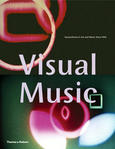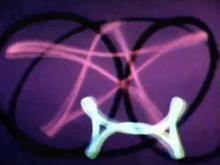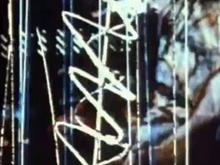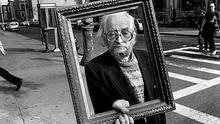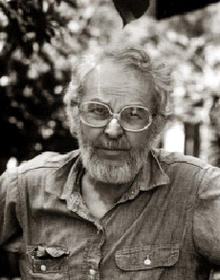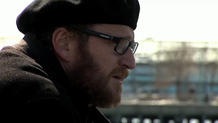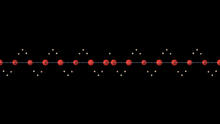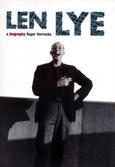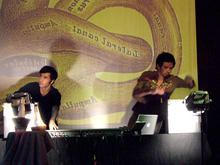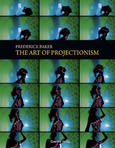Hy Hirsh
(1911-1960) assisted various experimental filmmakers and began independent film work in 1951. Worked alternatingly at film publicity, advertising photography, fashion photography, experimental films, experimental photography in Europe.
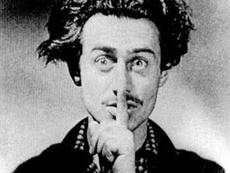
Hy Hirsh was born in Philadelphia in 1911. He lived in Los Angeles between 1916 and 1937, and began working with still photography in 1932, according to a curriculum vitae he prepared in 1961. He worked as a motion picture cameraman between 1930 and 1936, moved to San Francisco in 1937, then to Europe in 1955 where he spent the last years of his life in Amsterdam and Paris. The CV states he "Assisted various experimental filmmakers, 1946-1952. Began independent film work in 1951. Worked alternatingly at film publicity, advertising photography, fashion photography, experimental films, experimental photography in Europe."
Source: Cindy Keefer: "Hy Hirsh Preservation: History And Mystery" in "KINETICA 3: Abstraction, Animation, Music - Featuring Hy Hirsh and the Fifties - Jazz and Abstraction in Beat Ear Film", Los Angeles, 2001
The mysterious Hy Hirsh apparently preferred to 'perform' even his single-screen films live with various soundtracks and visuals re-edited for each specific programme. We know that he prepared at least two films for double projection — Double Jam (ca. 1955, probably an oil-wipe film with jazz track, but no certain or consistent print is currently known) and Décollages Recolles ('Unglued things re-glued'), of the late 50s, perhaps a blanket title for re-edited collage performances, but one surviving print seems to be marked for double projection, with purely non-objective imagery on one screen and mixed abstract and representational footage (scratched, painted and optically-printed, as well as pure 'found footage', e.g., a colour shot of an A-bomb blast which turns into fireworks, early Chaplin comedy, etc.) on the other. (...)
What emerges from the remnants of Hirsh's estate is quite inconclusive. One group of films is abstract, loosely synched to music, employing oil-wipe (Chasse des Touches) and oscilloscope patterns (Divertissement Rococo, Come Closer, Eneri) optically printed sometimes in multi-screen configurations. Another group includes beautiful live-action footage nicely edited for rhythm and visual continuity (Autumn Spectrum, Défense d'afficher, Gyromorphosis). A third group is complex optically printed collages (La Couleur de la Forme, Scratch Pad) involving matting, high-contrast colourizing and texturizing, step-printing, and other technical devices already exploited by Len Lye (who is discussed elsewhere in this catalogue). Scratch Pad also includes scratch/paint-on-film footage, while both Scratch Pad and La Couleur de la Forme contain manipulated 'found footage'. And the silent copy titled Décollages Recolles (mentioned above) contains elements of all the other films.
Dating the films proves difficult. Friends in Paris (ca. 1957) recall that Hirsh built an optical printer in his apartment there from essentially junk parts — he was a marvelous tinkerer and mechanic — but this does not mean that he did not have one before in America. Gyromorphosis won a prize at Brussels in 1958. Jordan Belson used some of the abstract oscilloscope footage in the Vortex Concerts (1957-9) but never saw any of the optically printed representational footage. It is tempting to align the films in a 'logical' order: abstract films first, then simple live action, then complex, composite-imagery optical printing last — but this may well be false, since Chasse des Touches, Come Closer, and Eneri are optically printed into multi-screen sections, which is technically as difficult as the more subtle and spectacular work in La Couleur de la Forme.
The aesthetics of the films are equally confusing. We know Hirsh liked to 'perform' his films live, re-editing them specially for each programme. Some of the current prints — Autumn Spectrum, Défense d'afficher, Gyromorphosis, Chasse des Touches, and Divertissement Rococo — are quite smoothly edited into 'finished films', and they present a very mellow sensibility, the epitome of the cool jazz world of the 50s. Come Closer, in polaroid stereo 3-D, is quite accomplished and well-integrated, with oscilloscope patterns twirling in festive arrangements that recall carnival decorations, while Jamaican music supports this mood; the depth sensation is pleasant and striking, with many figures choreographed to move in appropriate rhythmic pulses that exploit a forward-backward alignment, while other figures (notably a set of bracelet-like circles), through the magic of optical printing, intersect and move through each other in a delightfully impossible way. Eneri, Scratch Pad, and La Couleur de la Forme display a high degree of technical inventiveness; though Eneri and La Couleur seem somewhat unclear in structure (perhaps due to fragmentary print condition), Scratch Pad ranks as one of the best scratch-on-film works, using abstract paint-on-film and live action footage, and in both cases scratching over what are revealed to be the energy centres of the movements.
Hirsh re-uses similar footage in several films (flights of birds, fireworks, parades, multi-screen configurations, certain oscilloscope figures, bodies of models matted with abstract textures and representational scenes inside them, etc.) clearly in an attempt to construct a compositional series, but it is hard to judge the result of the serial arrangement with the films in their present condition. As it is, the only overall impression one gets from Hirsh's films is not of a highly intellectual or mystic thinker (like various other film-makers we have discussed) but rather of an individual with tremendous dexterity and inventiveness, of considerable joie de vivre and a sensibility for mellow, charming experience.
(William Moritz "Non-Objective Film: The Second Generation" - originally published in Film as Film, Formal Experiment in Film, 1910 - 1975, David Curtis and Richard Francis, Eds. London: Hayward Gallery and Arts Council of Great Britain, 1979)
Source: Center for Visual Music
Reading
Links
- Center for Visual Music's page of Hirsh photography
- "HY HIRSH | color photographs" by Dennis Reed © 2008 Paul M. Hertzmann, Inc. (PDF)
